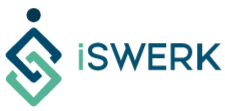
Geographical boundaries are no longer a barrier to building a high-performing team. For small to mid-sized businesses (SMBs), startups, and HR professionals, the Philippines has emerged as a powerhouse for hiring remote staff.
With a large pool of English-proficient, highly skilled, and dedicated talent, companies can significantly reduce operational costs while enhancing productivity and efficiency. This guide will walk you through the essential steps to successfully onboard your Filipino remote team.
Why the Philippines?
The advantages are compelling:
- Exceptional English Proficiency: The Philippines boasts one of the highest English literacy rates in Asia, making communication seamless.
- Strong Work Ethic & Cultural Compatibility: Filipino professionals are known for their dedication, loyalty, and adaptability, often aligning well with Western business cultures.
- Significant Cost Savings: Access top-tier talent at a fraction of the cost of local hires, freeing up budget for growth.
- Diverse Skill Sets: From virtual assistants to specialized software developers, the talent pool is vast and varied when hiring remote staff in the Philippines.
Let’s dive into the process.
The Process

The Foundation – Defining the Role and Legal Structure
Step 1: Define the Role and Expectations
Before anything else, clearly define what you need. Create a detailed Job Description (J.D.) that specifies not just duties, but also critical elements like time zone expectations (e.g., “must overlap with EST for 4 hours daily”).
Also, the outline required technical setup, such as minimum internet speed (e.g., 25+ Mbps) and a reliable power backup system.
Step 2: Choose Your Hiring Model (Classification is Key)
Understanding legal classifications is essential for hiring remote staff in the Philippines compliantly.
Independent Contractor: This offers flexibility with fewer employer obligations. Ensure the role meets specific criteria to avoid misclassification – the contractor should use their own tools, set their own hours, and manage their workflow.
Full-Time Employee: Entails compliance with comprehensive Philippine labor laws, including mandatory benefits.
Employer of Record (EOR): The simplest path for hiring employees without setting up a local entity. An EOR handles all local payroll, taxes, and mandatory benefits, ensuring full compliance.
The Recruitment Process
Step 3: Source Top Filipino Talent
Finding the right people is essential.
Dedicated Platforms: Websites like iswerk.ph specialize in connecting businesses with Filipino remote workers.
Global Job Boards: Leverage LinkedIn and Indeed, targeting specific locations within the Philippines.
Recruitment Agencies: For specialized or senior roles, consider partnering with a remote staffing expert like iSWerk, who can provide access to a pre-vetted, high-quality talent pool, including niche specialists beyond general Filipino virtual assistant salary expectations.
Step 4: Conduct a Rigorous Screening and Interview Process
Implement a thorough vetting process:
Assessment: Include skills tests for English proficiency and role-specific technical knowledge.
Remote Interview Best Practices: Utilize video interviews, employ the STAR method for behavioral questions, and be mindful of time zone differences.
Background Checks: Essential for verifying identity, employment history, and credentials.
Compliance and Onboarding
Step 5: Draft a Compliant Contract and Compensation Package
Your contract must adhere to the Philippine Telecommuting Act (RA No. 11165). For employees, mandatory benefits include contributions to SSS (Social Security System), PhilHealth (National Health Insurance), Pag-IBIG Fund (Housing Development Fund), and 13th-Month Pay.
When considering a PH remote salary guide, here are some general monthly $USD benchmarks (Note: these are indicative and vary by experience and specific role):
| Role | Monthly Salary Range ($USD) |
| Virtual Assistant (Entry) | $400 – $800 |
| Customer Service Representative | $500 – $900 |
| Digital Marketing Specialist | $700 – $1,500 |
| Software Developer | $1,200 – $3,500+ |
Step 6: Set Up Compliant and Timely Payroll
Managing international payroll, local taxes (BIR), and government contributions can be complex. Using a specialized payroll provider or an EOR is highly recommended to ensure timely payment, which is critical for employee satisfaction and compliance.
Step 7: Execute a Strategic Onboarding and Setup
A smooth onboarding sets the stage for success. Provide a remote onboarding checklist: a welcome package, immediate IT/tool access (VPN, communication platforms), team introductions, and a clear 30-day work plan. Consider stipends for reliable internet and power backup for your remote staff.
Conclusion: The Future of Your Global Team
Hiring remote staff in the Philippines is a strategic move that offers unique access to skilled talent, significant cost savings, and enhanced business agility.
While the benefits are obvious, businesses that are new to global remote staffing may struggle to navigate the complexities of legal compliance, cultural bridging, and finding the right talent.
Partner with a Remote Staffing Expert
Don’t let the intricacies of global workforce recruitment hold you back. iSWerk is your trusted partner for building a high-performing remote team in the Philippines.
We handle all the complexities of Philippine labor law, payroll, and government contributions (SSS, PhilHealth, Pag-IBIG), allowing you to focus on your core business. With iSWerk, you gain access to a pre-vetted, high-quality talent pool and receive ongoing support for successful cross-cultural team management and retention.
Ready to grow your team the smart, compliant way without the HR headaches?
Contact iSWerk today for a free consultation and find your ideal Filipino remote staff member.
Discover Compliant Remote Staffing with iSWerk. Send us an Email today!

